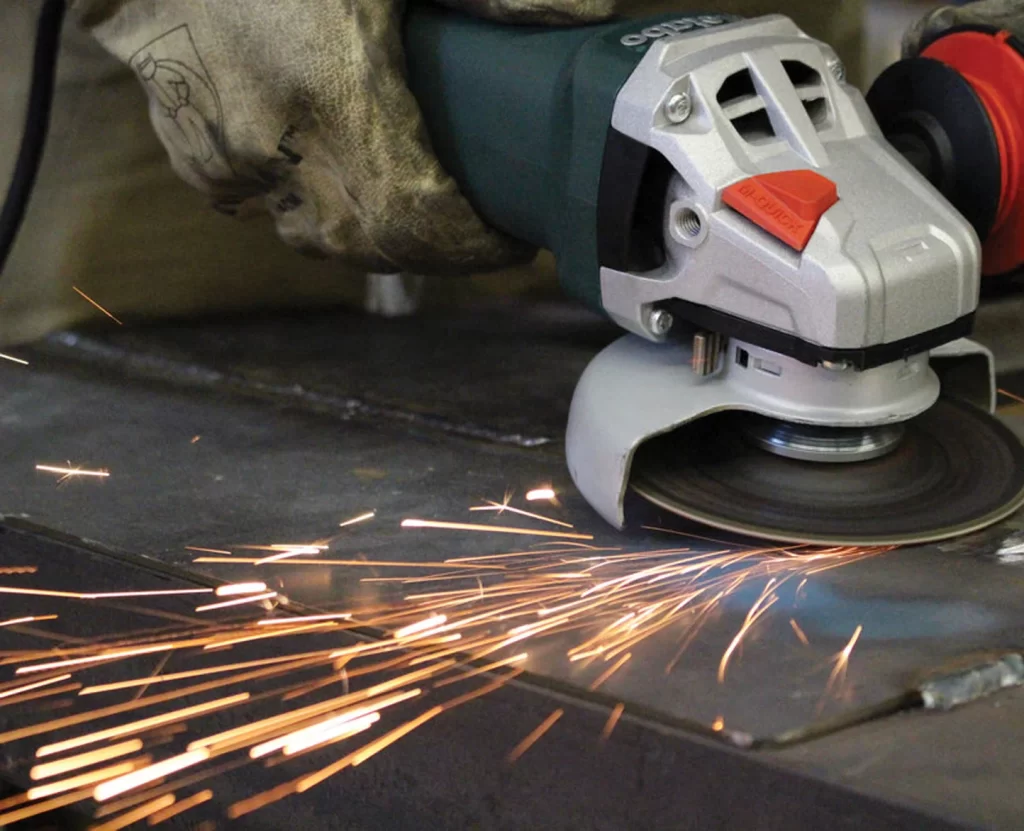The processing of metals and alloys generates fine particulates that must be extracted from the environment. When particles from metalworking activities are dispersed into the air, they pose a risk as metal dust.
Metalworking machinery often disperses this dust, and although it’s impossible to eliminate grinding dust from grinding entirely, its spread can be minimized and managed. Despite using advanced machinery, managing grinding dust is essential to:
- Ensure your operation continues smoothly with minimal disruptions
- Keep your workforce efficient, content, and safe
- Sustain a clean and secure working atmosphere
- Lower the costs associated with machinery upkeep
Thus, maintaining a dust-free facility benefits both your employees’ welfare and your financial health. Implementing an effective dust collection system for grinding activities safeguards your employees and ensures compliance with health and safety regulations.
Improving air quality to meet local standards enhances team morale and operational efficiency. Equipping your workspace with the right dust collection solutions can lead to happier employees, reduced turnover, and, consequently, higher production levels and business expansion.
Indicators That Your Facility Requires a Dust Collection System for Metal Grinding
Recognizing the need for a dust collector can sometimes be straightforward. Nonetheless, several signs indicate the necessity for a dust collection system:
- Visibility of Dust Clouds: If you notice dust accumulating into visible clouds, it’s time to consider dust collection.
- Quick check: Look for any haze in the air of your facility.
- Quick check: Look for any haze in the air of your facility.
- Ventilating the Workspace: If employees frequently need to open doors to clear the air, indicating discomfort, it might be time to assess your dust management strategy. This can also lead to increased heating and cooling expenses.
- Quick check: Note how often doors and windows are opened for ventilation.
- Quick check: Note how often doors and windows are opened for ventilation.
- Clogged HVAC Systems: A buildup of dust in heating and cooling systems suggests the need for improved dust collection. These systems are designed to handle moderate dust levels but shouldn’t be perpetually blocked.
- Quick check: Keep track of the frequency of HVAC filter replacements.
- Quick check: Keep track of the frequency of HVAC filter replacements.
- Dusty Equipment: If machinery accumulates dust quickly after cleaning, it’s a clear sign that dust collection measures are necessary.
- Quick check: Monitor a cleaned surface for dust accumulation after 1-2 days.
If you’ve observed any of these conditions, implementing a dust collector for metal grinding is advisable. Some particles are too small to see but can still pose significant risks, making it crucial to look out for these signs.
Exploring the Advantages of a Surface Grinder Dust Collector
Atmax Filtration dust collectors is your go-to source for grinding dust hazard solutions. Our experts will guide you in selecting the ideal system, whether it’s an initial installation or an upgrade.
Our surface grinder dust collectors come equipped with Nano-Elite cartridge filters, boasting a MERV 15 rating. These filters are highly efficient, capturing 99.99% of airborne particles, ensuring a clean air environment.
Our designs prioritize durability, cost-effectiveness, and easy maintenance. Features like quick-lock filter doors and downward flow technology simplify filter changes and minimize operational interruptions.
While cartridge collectors are generally preferred for grinding tasks, each situation should be evaluated individually to determine the most suitable solution.
For more information write to us at sales@atmaxfiltration.com or call us at +1 (816)-745-9994

